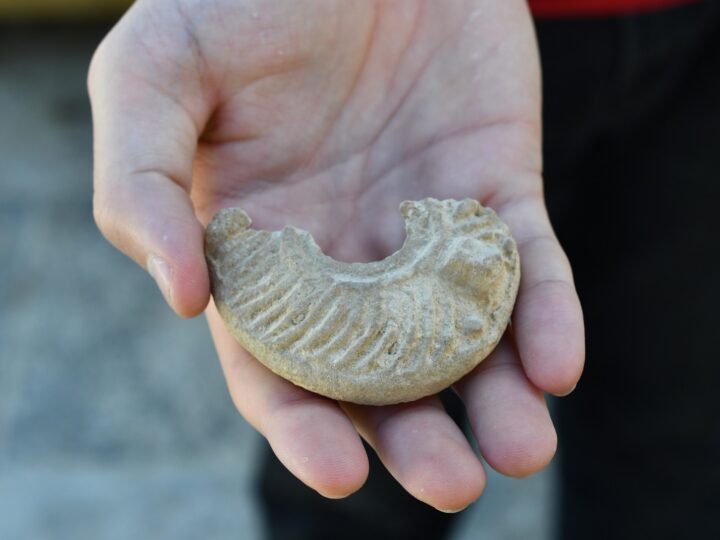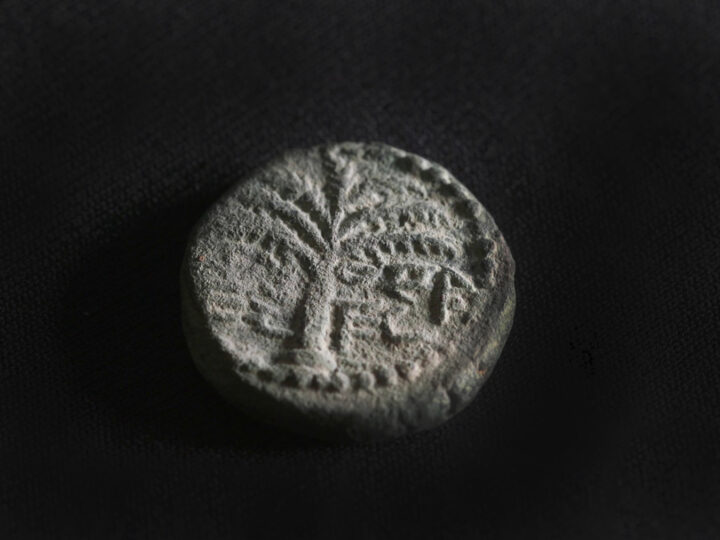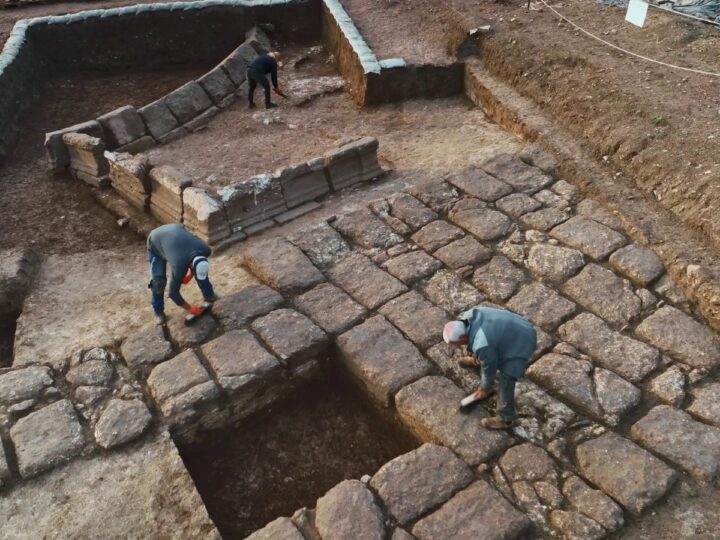The Israel Antiquities Authority recently uncovered a magnificent mosaic dating to the Byzantine period in the fields of Kibbutz Bet Qama, during an archaeological excavation being carried out prior to the construction of a new highway interchange in the area.
The Israel Antiquities Authority said the well-preserved mosaic was found among the remains of a settlement that extends across more than six dunams on the kibbutz’s farmland.
Dr. Rina Avner of the Israel Antiquities Authority, who is directing the dig, says archaeologists found a large hall measuring 12 meters long by 8.5 meters wide. The hall’s impressive opening and the breathtaking mosaic that adorns its floor suggest that the structure was a public building.
The mosaic is decorated with geometric patterns and its corners are enhanced with amphorae, a pair of peacocks, and a pair of doves pecking at grapes on a tendril. These are common designs that are known from this period; however, what makes this mosaic unique is the large number of motifs that were incorporated in one carpet.
Pools and a system of channels and pipes between them used to convey water were discovered in front of the building. Steps were exposed in one of the pools and its walls were treated with colored plaster (fresco).
Archaeologists in the Antiquities Authority are still trying to determine the purpose of the impressive public building and the pools whose construction required considerable economic resources.
The site, which was located along an ancient road that ran north from Beersheva, seems to have consisted of a large estate that included a church, residential buildings and storerooms, a large cistern, a public building and pools surrounded by farmland. The archaeologists say one of the structures probably served as an inn for travelers who visited the place.







